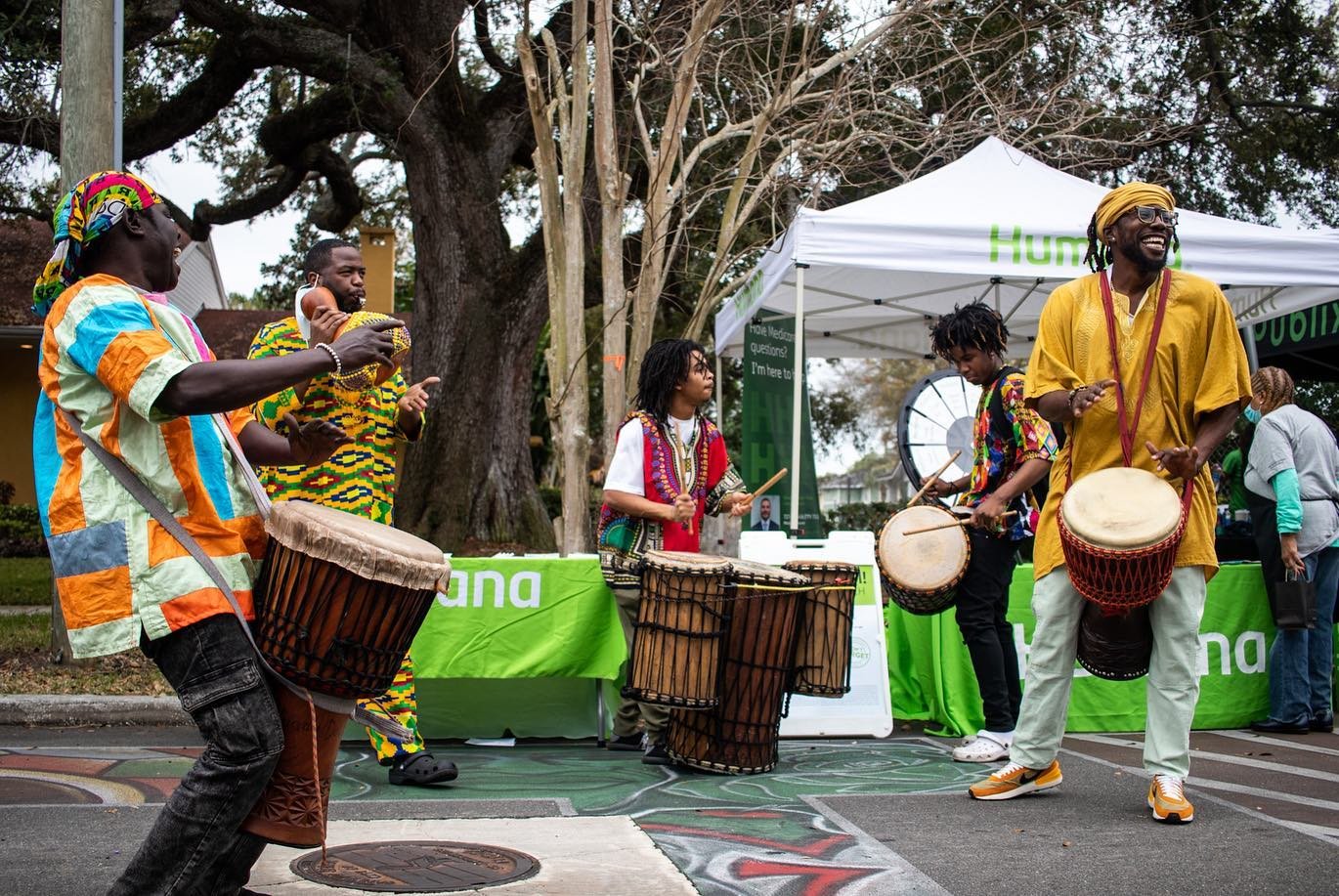Evolution of the Circuit
Musicians in St. Petersburg's Deuces Live Main Street district.
Photo courtesy of the Tampa Bay Collard Green Festival, Inc.
The Chitlin’ Circuit became so successful because musicians did not make money from records or recording contracts due to the setup of the music industry at the time. The Circuit enabled musicians to earn a living with regular payments, and helped sustain local economies in Black strolls across the South. However, by the late 1950s as rock ‘n’ roll caught on with White crowds, records and recording contracts became more financially viable for musicians and the Circuit began to decline.
Changes in the strolls themselves also began to impact the Circuit after the 1950s in large part due to urban renewal policies that disproportionately and negatively impacted Black communities. These policies destroyed Black buildings and neighborhoods throughout Florida and the country. Racist urban renewal policies enacted by White politicians did not just impact the Chitlin’ Circuit, they decimated the Black economies that supported the Circuit and made it possible.
Florida's strolls were a significant part of the Circuit, dating back to the early 20th century, and they continue to play an important role. Despite changes in the music industry and the destruction of the historic strolls, the Circuit evolved. There is still a circuit of rhythm and blues musicians touring the country today, but at a significantly smaller scale. Scenes where history, music, cuisine and local retail come together, Florida's Chitlin' Circuit strolls are cultural destinations where community pride and heritage is preserved and protected for all to enjoy.

